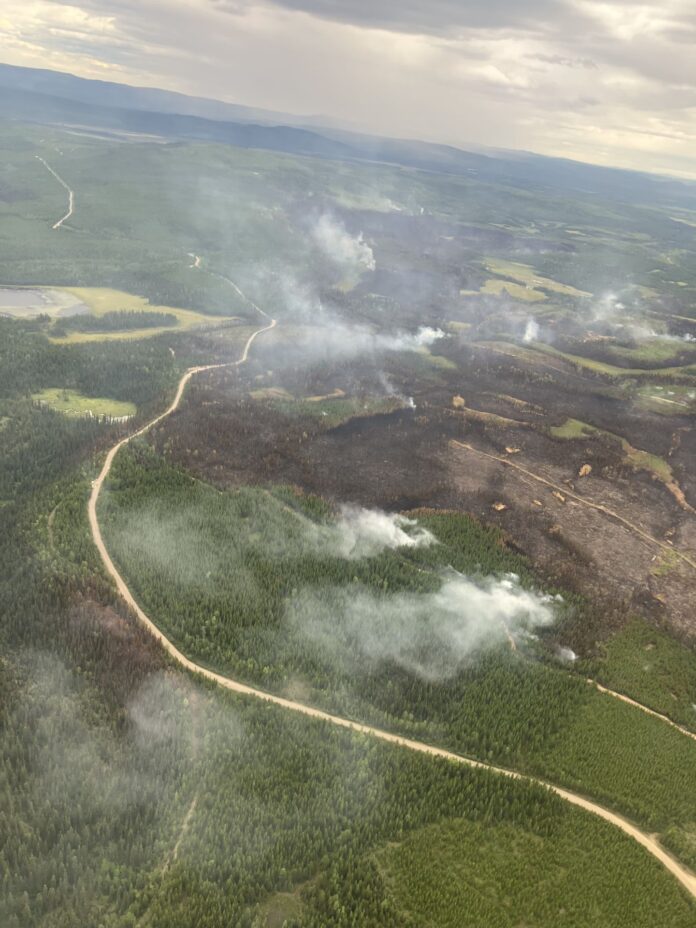The Cariboo Fire Centre (CFC) says with the help of cooler weather, the Snaking River Wildfire has been reduced from 1,164 to 893 hectares.
“The weather has given our crews some extra help on being able to get their work done, and has helped reduce the fire’s perimeter by nearly 300 hectares,” says Donna MacPherson, Fire Information Officer for CFC.
“They [Fire Crews] are able to get close to the fire line now, and are pulling very close to the perimeter fire and working adjacent to where it has been burning. This hasn’t been available to them during the hot weather we had a few days ago.”
MacPherson says that Fire Crews were initially planning a prescribed burn to decrease potential fuels in the area, but the burn has been canceled.
The weather also cleared enough smoke that Fire and Support Crews were able to put a GPS on a helicopter to get an accurate reading of the wildfire’s perimeter.
However, Macpherson says that the CFC and Fire Crews are aware that warmer conditions are forecasted for this coming week.
“That’s putting some more impetus for our crews to get their work done. They are trying very hard to get the perimeters of the fires stronger so that they would withstand any winds or warm conditions that are coming our way.”
The Snaking River Wildfire is 8.5 km from the Nazko First Nation and 65 km west of Quesnel.
An Evacuation Alert was issued by the Cariboo Regional District on July 31st, and the Nazko First Nation also issued an Evacuation Alert on August 2nd. Both Alerts are still in effect.
From July 31 until August 7, the CFC and BC Wildfire Service have been fighting 54 wildfires.
MacPherson says 44 of the fires were caused by lightning strikes, and five were started by humans. Currently, the CFC has 10 active wildfires, two, including the Snaking River wildfire, are listed as ‘Out of Control’, and eight are ‘Under Control’
“The weather has been very helpful to the crews, and its lowering the fire behaviour, enabling crews to get on them quickly. So, the initial attack success has been generally good this year,” says MacPherson. “For the most part, we have been able to get to the fires and get them under control on the same day or the day after.”
While most of the fires in the Cariboo have been caused by lightning strikes, the CFC discusses daily whether a fire ban is necessary in the region.
In the meantime, they ask people to be responsible and practice fire safety, and if anyone sees smoke or signs of a fire, to report the activity to the Fire Centre.
Something going on in the Cariboo you think people should know about?
Send us a news tip by emailing [email protected].










